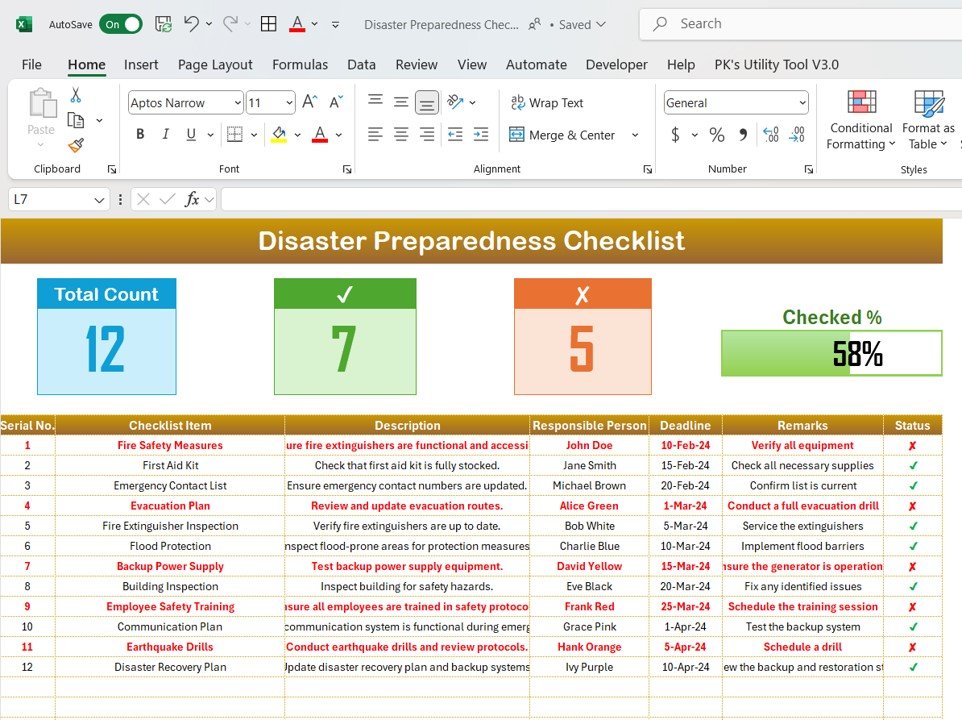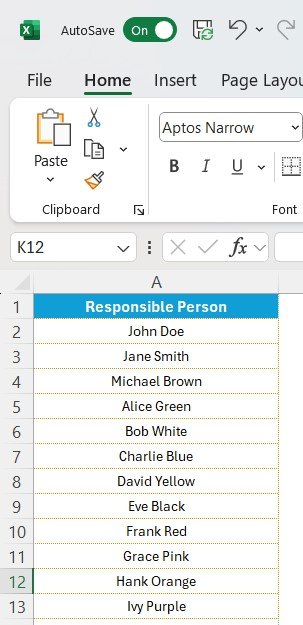Emergencies, whether caused by natural disasters or unforeseen events, can happen unexpectedly. Being unprepared can lead to more chaos and damage. Having a solid Disaster Preparedness Checklist in place is crucial to ensure safety, minimize loss, and help families or organizations recover more efficiently. A well-organized disaster preparedness plan can save lives, protect assets, and ensure a faster return to normalcy after the event.
Key Features of the Disaster Preparedness Checklist Template in Excel
The Disaster Preparedness Checklist Template is designed to cover all essential areas of preparedness and response. This template includes two main worksheets that allow users to track tasks, assign responsibilities, and monitor progress. Below are the key features of this template:
1. Disaster Preparedness Checklist Sheet
This sheet contains the primary checklist, where you capture and track tasks related to your disaster preparedness plan. It includes both summary data and a checklist table that helps you monitor the status of each task.
Top Section: Quality Control Cards
- Total Count: Displays the total number of tasks required for disaster preparedness.
- Checked Count: Shows the number of tasks that have been completed.
- Crossed Count: Displays the tasks that have been marked as completed or crossed off the list.
- Progress Bar for Checked %: This visual element indicates how much of your disaster preparedness plan is complete. It’s a great way to quickly see your progress.

Checklist Table
This table is the core of the checklist, where you track each individual task. The table includes the following columns:
- Serial No.: A unique identifier for each task.
- Checklist Item: A brief description of the task that needs to be completed.
- Description: A more detailed explanation of the task and its importance.
- Responsible Person: The individual or team responsible for completing the task.
- Deadline: The date by which the task must be completed.
- Remarks: Any additional comments or details regarding the task.
- Status: Mark each task as completed (✔) or not completed (✘).
2. List Sheet Tab
This tab contains a list of responsible persons, which is used to create a drop-down list in the main checklist table. This ensures that tasks are assigned to the correct people and that there’s no confusion about responsibilities.




